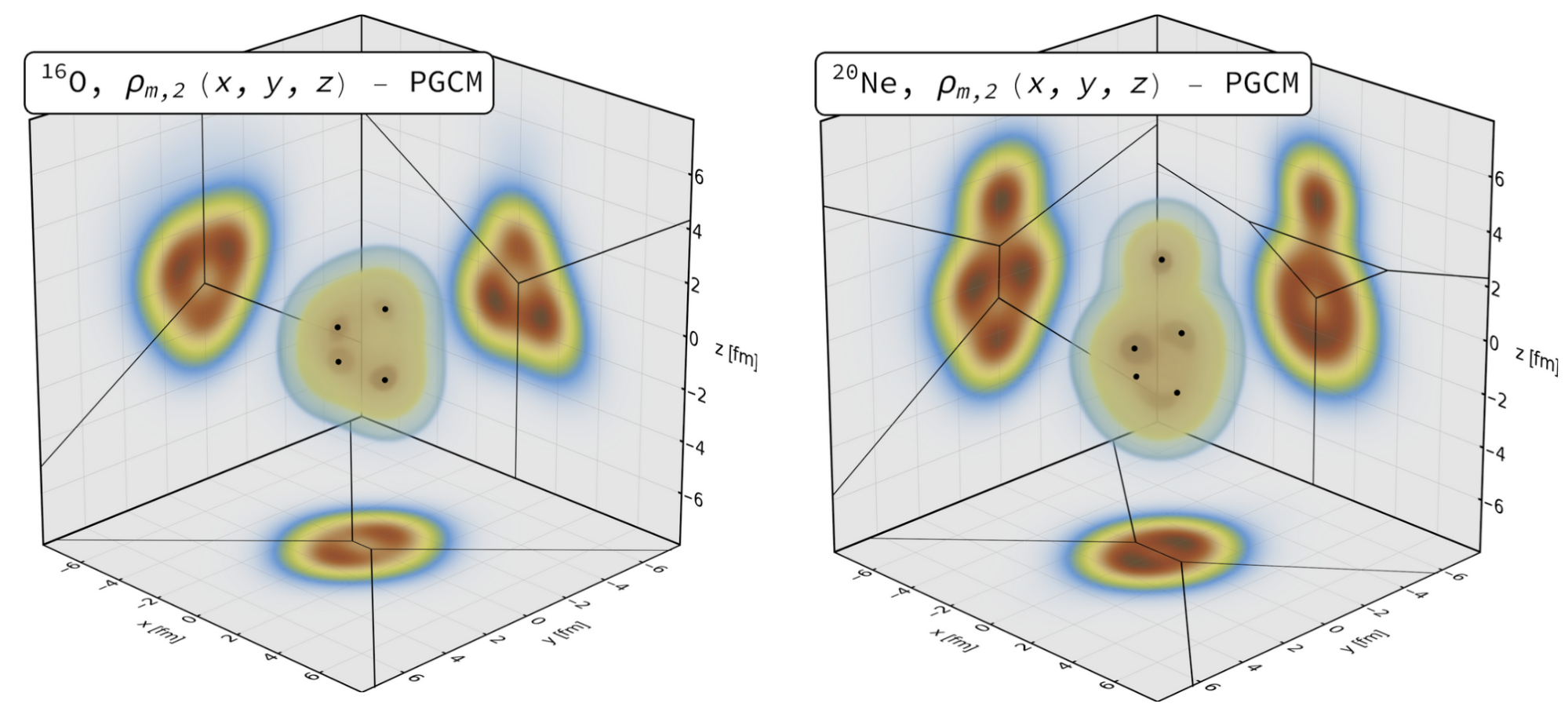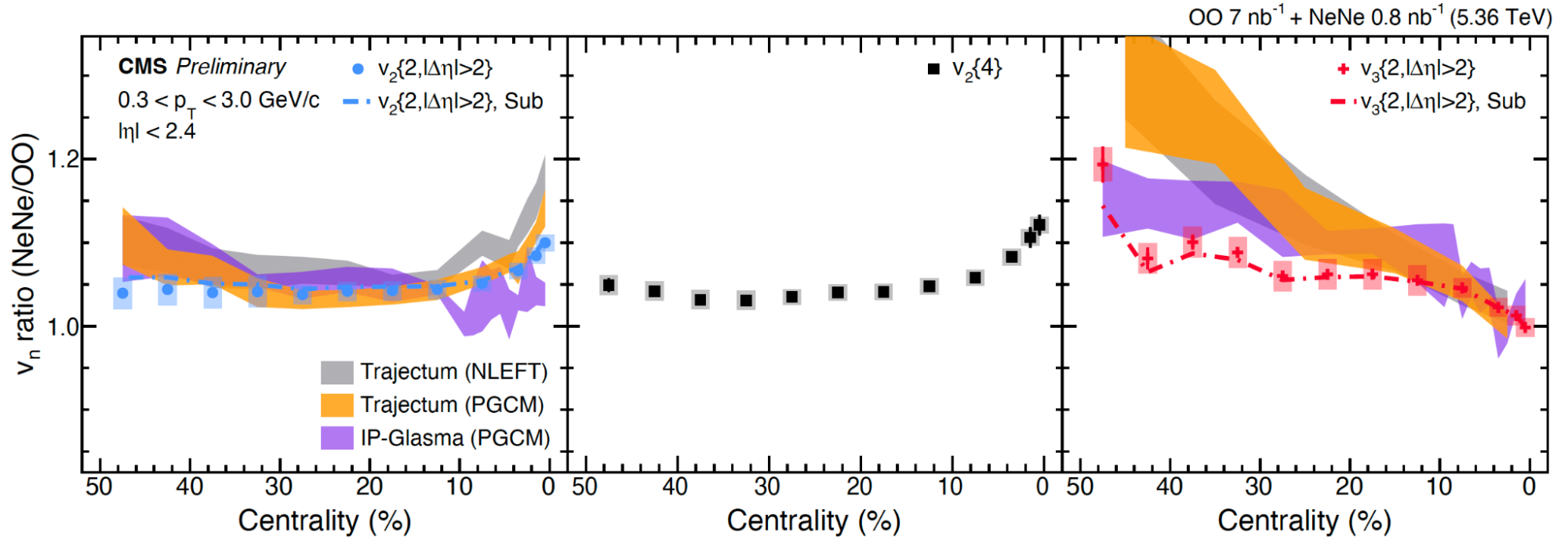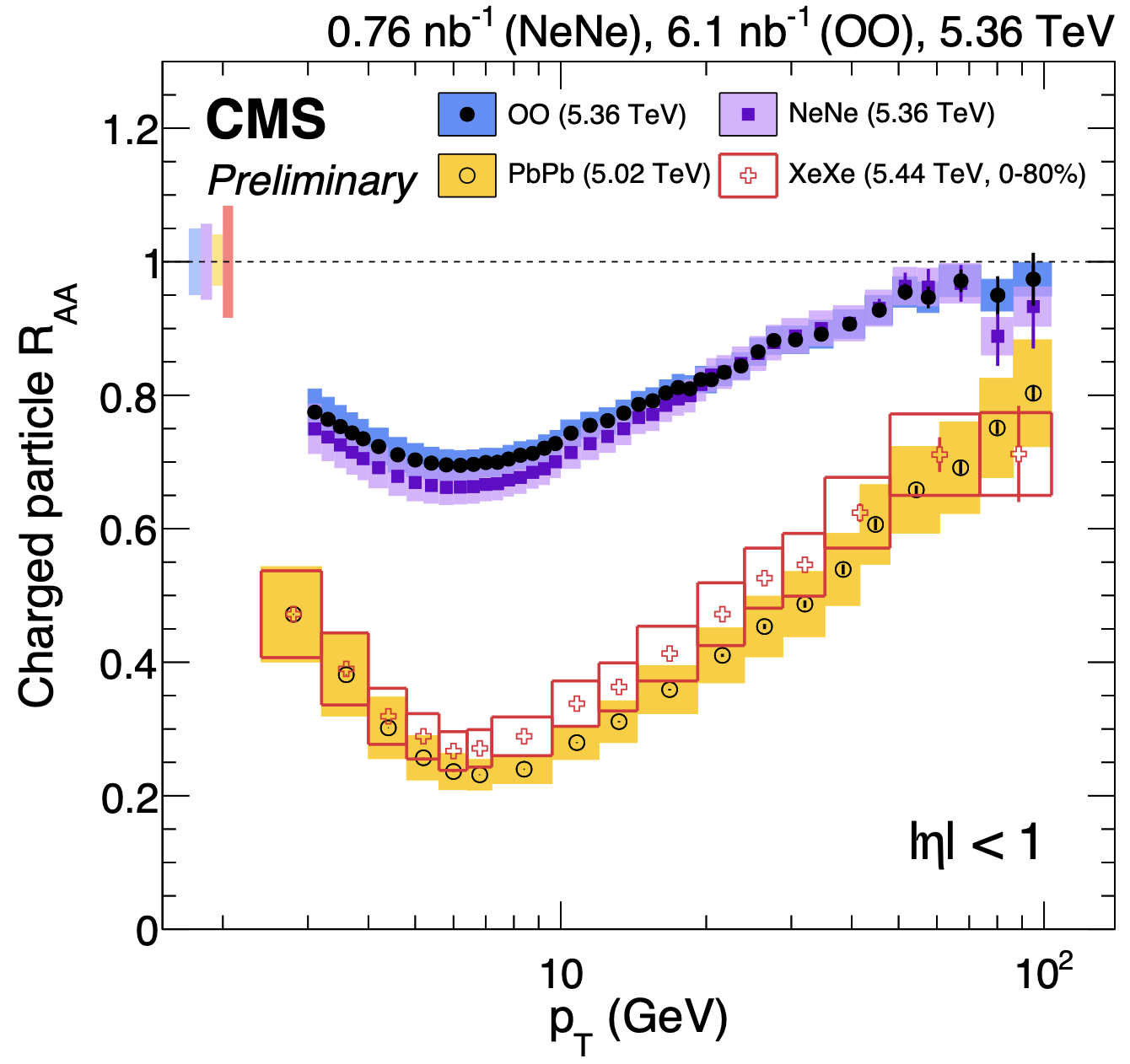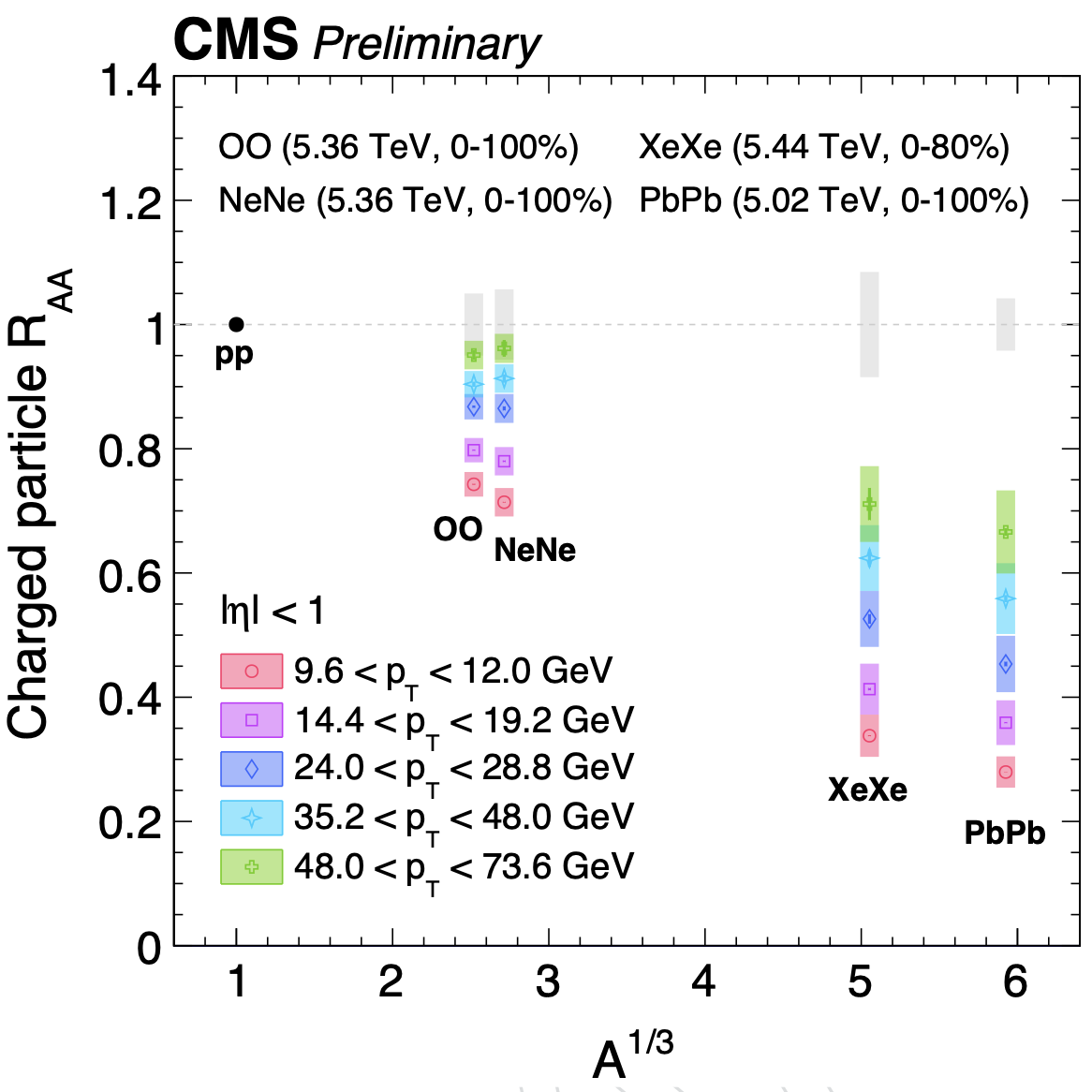CMS explores light-ion collisions: suppression, scaling, and collectivity

The CMS experiment has reported first results from the LHC’s dedicated oxygen–oxygen (O–O) and neon–neon (Ne–Ne) collision run, offering an unprecedented look at quark–gluon plasma (QGP) formation in light-ion systems. These studies address long-standing questions about the minimal conditions required for QGP droplets to form and how energy loss and collectivity scale with nuclear size and geometry.
The July 2025 run delivered O–O and Ne–Ne collisions at a centre-of-mass energy of √sNN = 5.36 TeV per nucleon pair. CMS collected 6.1 nb⁻¹ of O–O data together with a proton–proton baseline at the same energy, followed by Ne–Ne collisions shortly after. The first analyses focused on the nuclear modification factor RAA, which compares charged-particle production in nucleus–nucleus collisions to a scaled proton–proton reference.
In O–O collisions, RAA exhibits a clear suppression: the ratio dips to about 0.65 around 6 GeV before returning toward unity at higher transverse momentum. This behaviour is consistent with parton energy loss in a dense medium and favours models that incorporate quenching. “Even with such light nuclei we observe signs of QGP formation,” said Vipul Pant, a PhD student at the University of Illinois Chicago and one of the lead analysers of the study.

Figure 1. The ratio between charged particle yield in nucleus-nucleus collisions and a scaled baseline proton-proton yield (RAA), as a function of transverse momentum (pT). CMS sees the oxygen-oxygen data lie below unity and have compared the measurement to theoretical models without parton energy loss (left) and with energy loss (right).
The Ne–Ne results go one step further. Here, RAA reaches a minimum of about 0.6 at 6 GeV, a deviation more than seven standard deviations away from the expectation of no modification. The suppression is slightly stronger than in O–O, in line with expectations that larger nuclei generate more substantial medium effects. “It has been a rollercoaster of emotions since July 8th, the day we took neon–neon data,” recalls Cristian Baldenegro, a postdoc at MIT. “We were impressed to see this amount of nuclear modification in both neon–neon and oxygen–oxygen data.” The observation that adding just a few nucleons, from A = 16 to A = 20, already alters the suppression pattern underlines the sensitivity of these effects to system size.

Figure 2. Shapes of (left) oxygen and (right) neon nuclei as predicted from theory.
With O–O and Ne–Ne results in hand, CMS performed a pioneering system-size scan by combining the new measurements with earlier data from Xe–Xe (A = 129) and Pb–Pb (A = 208) collisions. Because nuclear radius scales roughly with A¹ᐟ³, plotting RAA against this variable provides a simple geometric proxy for the average path length traversed by partons. Remarkably, suppression values across all four systems fall into a coherent trend, suggesting that geometric scaling may underlie the system-size dependence of parton energy loss. Establishing the exact connection will require careful theoretical study, since other properties such as QGP density and temperature also vary with A, but the data offer an invaluable new handle on the interplay between nuclear geometry and medium effects.

Figure 3. Comparison of the ratios (NeNe/OO) of measured flow patterns with model calculations, indicating evidence of deformed nuclear structure of Ne nucleus.
Beyond suppression, CMS also explored collective flow in O–O and Ne–Ne collisions. The elliptic flow coefficient v₂, linked to the almond-shaped overlap of colliding nuclei, increases towards mid-central collisions and decreases again in the most central events. This pattern closely mirrors that of Pb–Pb collisions, showing that hydrodynamic-like collectivity persists in systems an order of magnitude smaller. The triangular flow v₃, sensitive to fluctuations in the initial energy density, behaves differently: in O–O and Ne–Ne it grows steadily from peripheral to central events, in contrast to the saturation behaviour seen in Pb–Pb.
A direct comparison of the two light systems reveals that Ne–Ne collisions generate larger v₂ than O–O in overlapping events, while the v₃ ratio decreases. These differences are well captured by hydrodynamic models that incorporate nuclear-structure inputs, indicating that the observed collectivity directly reflects the geometry of the colliding nuclei. In particular, the Ne–Ne results provide experimental sensitivity to the predicted deformation of the neon nucleus, offering one of the clearest demonstrations yet of how nuclear structure maps into final-state flow.

Figure 4. The ratio between charged particle yield in nucleus-nucleus collisions and a scaled baseline proton-proton yield (RAA), as a function of transverse momentum (pT), measured by CMS in NeNe and OO collisions at 5.36 TeV, XeXe at 5.44 TeV, and PbPb at 5.02 TeV.

Figure 5. CMS measured how the nuclear modification (RAA) changes with the size of the colliding nuclei. Physicists plotted it against A1/3, a simple way to estimate the “length” a parton travels inside the nucleus. Results are shown for NeNe, OO, XeXe, and PbPb collisions.
Taken together, the CMS findings show that light-ion collisions display both jet-quenching–like suppression and hydrodynamic collectivity. By bridging the gap between small systems such as proton–nucleus and the heavy-ion collisions of xenon and lead, the new results mark a major step in defining the minimal requirements for QGP formation. With further analysis and theoretical input, they will help refine our understanding of how nuclear geometry influences the early-time evolution of strongly interacting matter under extreme conditions.
Note: This article is based on the following CMS news releases: “LHC’s first oxygen collisions – CMS spots signs of small-scale quark-gluon plasma”, “LHC’s first neon–neon collisions – CMS spots an interesting pattern”, and “Collective motion in tiny systems: oxygen and neon collisions as a window into nuclear structure”.
